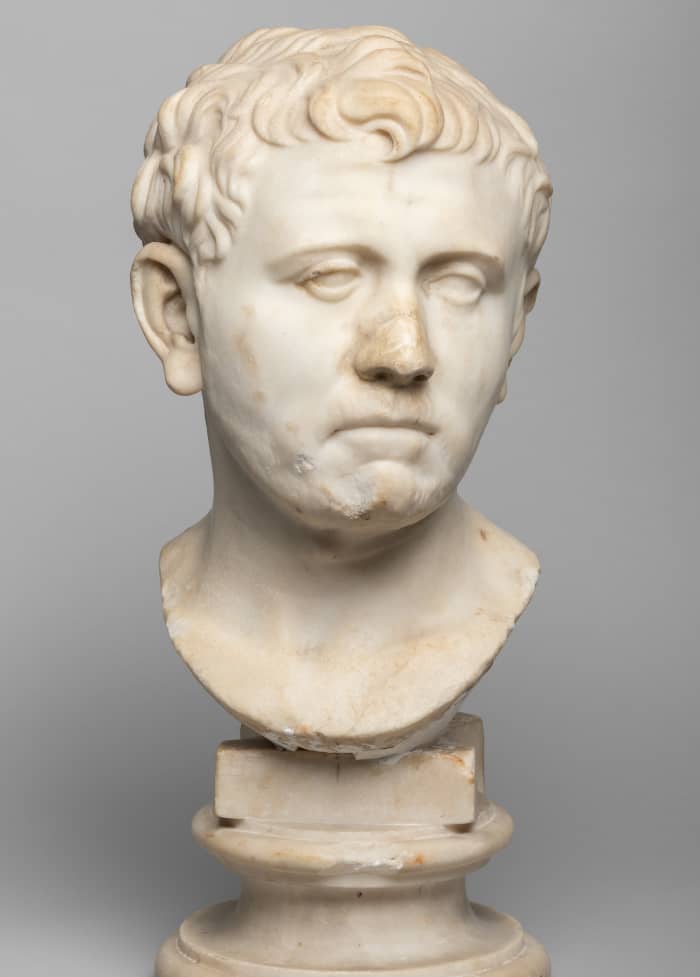This post was originally published on this site
This Goodwill purchase wasn’t a total bust.
In fact, the $34.99 sculpture that an art collector picked up in Austin, Texas in 2018 was no mere tchotchke, but actually a centuries-old ancient Roman bust that had been missing from Germany since World War II.
Laura Young, the savvy shopper with the good eye, told The Art Newspaper that she spotted the marble bust of a man with curly hair and a beard on the floor, under a table, at her local Goodwill. It looked “pretty dirty, pretty old,” she said. She bought it for less than $40, thinking someone might want to buy it from her for a garden statue or something. It weighed a hefty 52 pounds, and she asked a Goodwill employee to help her carry it to her car, where she buckled it in with a seatbelt to keep it safe during the ride home.
She was struck by how old and worn the statue looked, however, so she spent the next few years meeting with art history experts at the University of Texas at Austin and several auction houses across the country trying to trace its origin, according to the San Antonio Museum of Art.
Sotheby’s consultant Jörg Deterling identified the bust as a centuries-old sculpture that once belonged in the collection of King Ludwig I of Bavaria, which was further authenticated by the Bavarian Administration of State-Owned Palaces, Gardens, and Lakes. The bust may portray a son of Pompey the Great (106–48 BC), who was defeated in civil war by Julius Caesar.
The statue will be returned to its rightful home in Germany next year, but the Bavarian Administration of State-Owned Palaces has agreed that the curious find can be displayed at the San Antonio Museum of Art from now until May 21, 2023.
It’s still a mystery how a centuries-old, 52-pound marble Roman bust made its way from Germany to a Texas Goodwill shop. The museum notes that the work had been installed at the Pompejanum, a replica of a Roman villa in Aschaffenburg, Bavaria in Germany. Allied bombers targeted Aschaffenburg and seriously damaged the Pompejanum in January 1944 during World War II. The U.S. Army later established military installations in Aschaffenburg after the war ended, and the museum speculated that a returning soldier likely brought the sculpture to Texas.

Found in a Texas Goodwill: Portrait of a Man, Roman marble, late 1st century BC-early 1st century AD.
San Antonio Museum of Art
“We are very pleased that a piece of Bavarian history that we thought was lost has reappeared and will soon be able to return to its rightful location,” said Bernd Schreiber, president of the Bavarian Administration of State-Owned Palaces, Gardens, and Lakes, in a statement.
Another incredible facet of this story is that this wasn’t Young’s first major score from a Goodwill store. She told The Art Newspaper that she once bought a Chinese painting at Goodwill for cheap, and later sold it at Christie’s for $63,000.
“I’ve found a lot of interesting things at Goodwill in the past,” she said.
She won’t be making a tidy profit off of this marble bust, however. She said it’s “bittersweet” handing it over, “since I knew I couldn’t keep or sell the (bust).”
But this story is priceless, and Young said that she is glad that she got to be a small part of the statue’s long and complicated history. “And he looked great in the house while I had him,” she added.

